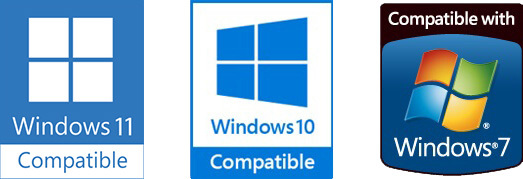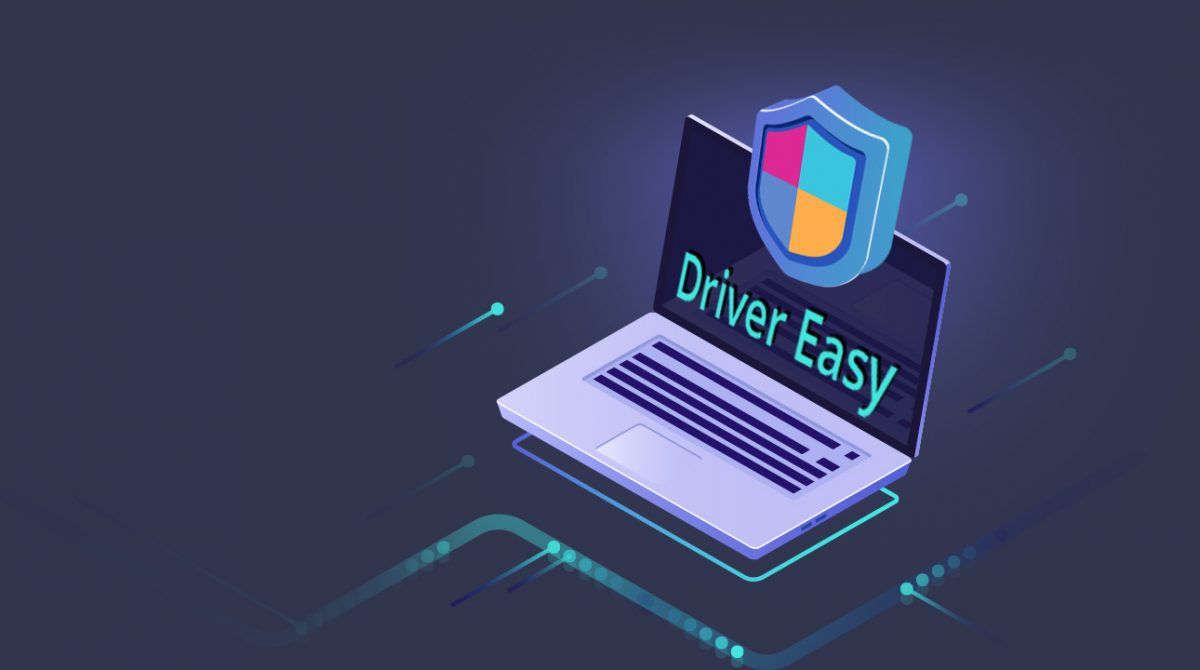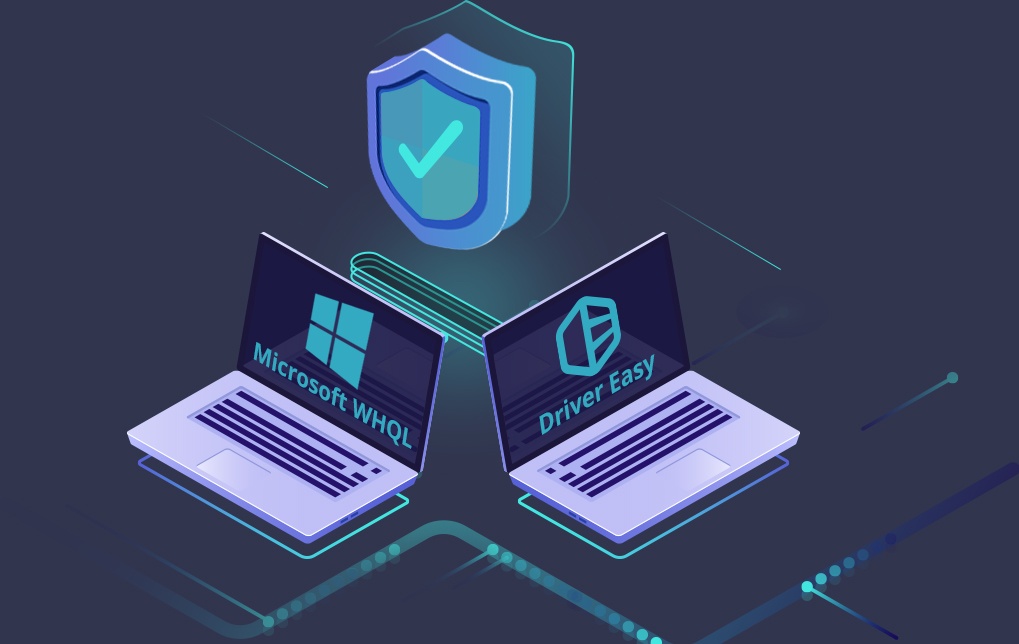
Microsoft WHQL Testing
Most hardware manufacturers put their drivers through Microsoft’s rigorous Windows Hardware Quality Labs (WHQL) testing process. If they pass, they’re officially certified stable and compatible with Windows.
If your manufacturer has a ‘Certified for Windows’ driver, that’s the one we’ll use. For Windows 10 and 11, Driver Easy installs only drivers that are ‘Certified for Windows’ through the Windows Hardware Quality Labs (WHQL) program. For Windows 7, 8 and Vista, Driver Easy installs WHQL drivers by default, if they’re available (which they are for 95.69% of drivers for those versions of Windows), but also gives users the option to install non-WHQL drivers.
But we don’t stop there. We also perform our own tests to ensure the stability of our drivers…
Certified by Driver Easy
We employ a strict testing regime to ensure our drivers are safe, secure and stable.
This is critical because not all manufacturers get their drivers certified by Microsoft – particularly for older hardware. (It’s a very rigorous and time-consuming process, and for manufacturers with a lot of devices and drivers, it can become quite expensive.)

We test on all the most popular combinations of hardware & software
Our tests are a lot more hands-on and practical than Microsoft’s tests. Because drivers behave differently on different computers, different versions of Windows, and even in the presence of different software applications, the only way to really tell if a driver will be stable, compatible and safe for everyone is to physically test it on all the popular hardware / operating system / software combinations. So that’s what we do:
We test on hundreds of PCs – Our testing facility is strategically located in Shenzhen, China, one of the country’s biggest IT hubs. We specifically selected this estate because we’re surrounded by hundreds of PC distributors, all within walking distance. This means we have unfettered access to an almost limitless supply of hardware, and can physically test our drivers on all the most popular computers – including the latest new models available on the market, as well as second-hand computers that still have a wide user base.
We test with physical devices attached – For external device drivers (e.g. for printers, external hard drives, mice, keyboards), we physically install the external device to test the driver.
We test on all current versions of Windows – On each test PC, we install and test thoroughly on Windows 11 32-bit, Windows 11 64-bit, Windows 10 32 bit, Windows 10 64-bit, Windows 7 32-bit and Windows 7 64-bit.
We test with popular programs installed – On each installation of Windows, we also install a variety of popular software programs before testing the driver (e.g. various versions of Microsoft Office, antivirus products and video players).

Here’s our full testing process
We subject all new drivers to a battery of tests.
Step 1. Filter out faulty drivers
First, we locate and download any new drivers from nearly 100 manufacturer websites, then scan them all with two proprietary tools that filter out any that:
- are incorrectly formatted;
- are missing files;
- are likely to be flagged by antivirus programs; or
- have failed our previous tests.
Then we add all drivers that pass these filters to our development-only version of Driver Easy.
Step 2. Test on all modern versions of Windows
We then scan a small selection of computers with our development-only Driver Easy. These computers have typical devices attached, like a mouse, keyboard, monitor and printer. On each computer, we test all modern versions of Windows (Windows 11 32-bit, Windows 11 64-bit, Windows 10 32 bit, Windows 10 64-bit, Windows 7 32-bit and Windows 7 64-bit):
We install each driver that Driver Easy recommends, one at a time.
After each driver installation, we check that the computer functions normally and all devices work properly. E.g. If it’s a network card driver, we test the internet connection, if it’s a video card driver, we test the screen resolution, if it’s a keyboard driver, we test that the keyboard is functioning properly, and so on.
We then check Windows’ Device Manager to ensure no device drivers are flagged as problematic.
We then restart the computer to ensure that the driver installation didn’t cause any issues with Windows (e.g. no blue screen of death on startup, no error messages, no unexpected behavior).
If all is working as expected, we return to step 1, and install and test the next driver.
If there are issues, we check the driver install log to see if any errors were detected during installation.
If the log is inconclusive, we do further testing to determine if it was the driver that caused the issue. Usually we test an alternative driver to see if it causes the same issue. If it doesn’t, then it’s likely the first driver is the culprit. If the same issue occurs with the alternative driver too, we test to see if the computer itself is the issue. Often this involves performing a system restore on the test PC.
If we can prove that the driver was the cause of the computer or device issue, we remove it from Driver Easy, then return to step 1, and install and test the next driver.
Any drivers that make it through our first two test phases are then added to the live Driver Easy database.
Step 3. Test on many popular computers
We then use Driver Easy to scan dozens of the most popular computer setups (PC, operating system, video card, sound card, network card, printer, default software, etc.):
We install each driver that Driver Easy recommends, one at a time.
After each driver installation, we check that the computer functions normally and all devices work properly. E.g. If it’s a network card driver, we test the internet connection, if it’s a video card driver, we test the screen resolution, if it’s a keyboard driver, we test that the keyboard is functioning properly, and so on.
We then check Windows’ Device Manager to ensure no device drivers are flagged as problematic.
We then restart the computer to ensure that the driver installation didn’t cause any issues with Windows (e.g. no blue screen of death on startup, no error messages, no unexpected behavior).
If all is working as expected, we return to step 1, and install and test the next driver.
If there are issues, we check the driver install log to see if any errors were detected during installation.
If the log is inconclusive, we do further testing to determine if it was the driver that caused the issue. Usually we test an alternative driver to see if it causes the same issue. If it doesn’t, then it’s likely the first driver is the culprit. If the same issue occurs with the alternative driver too, we test to see if the computer itself is the issue. Often this involves performing a system restore on the test PC.
If we can prove that the driver was the cause of the computer or device issue, we remove it from Driver Easy, then return to step 1, and install and test the next driver.
Over the course of a year, we test on hundreds of different computers in this way.
If a driver fails our tests…
If we establish that a manufacturer’s driver causes issues on any combination of hardware, operating system and software, we find an alternative version of the driver for that particular combination.
For example, if an audio driver supplied by Dell for a certain laptop causes issues on Windows 10, we’d source a different version of it. Typically from the audio card’s chipset manufacturer (e.g. Realtek). They’d usually have the most up-to-date drivers available because they continue updating their drivers almost indefinitely, whereas Dell would typically stop updating the laptop’s drivers as soon as it’s superseded by a newer model.
Once we’ve located an alternative driver, we start over at step 1 of our testing process with it.
Questions about our driver testing process?
If you have any questions about our driver testing process, please get in touch. We’ll be only too happy to answer.

Buy Driver Easy now
If your computer has become slow or unstable, or you just want to ensure you have the latest, fully-tested drivers for all your devices, download Driver Easy now. Both the free and the Pro versions will scan your entire PC and show you all the drivers you need to update. Then, with the free version, you can update them one at a time, or with the Pro version, you can update them all at once – with just one click.







